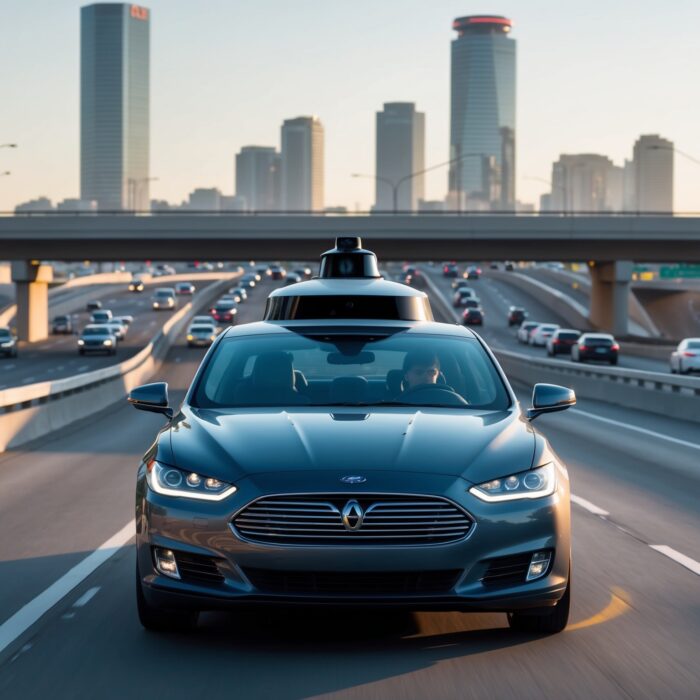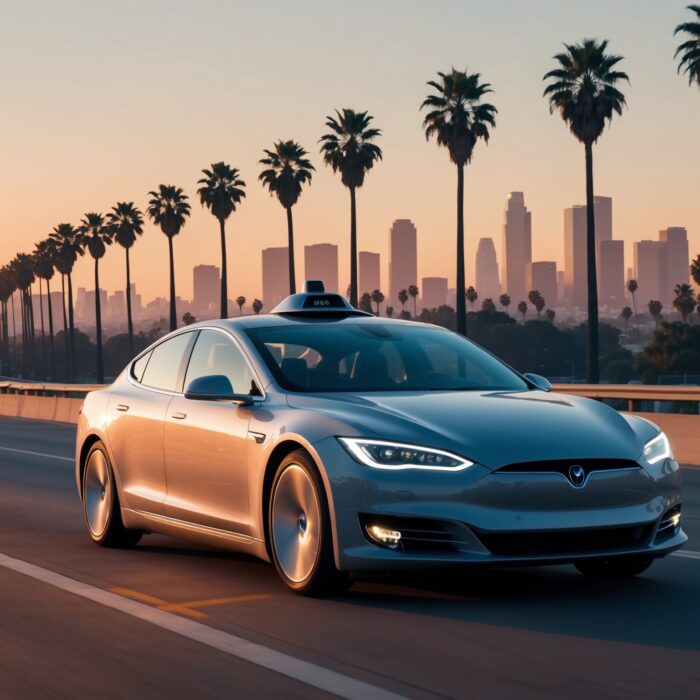Waymos Can Take Freeways In The Bay Area, Los Angeles, And Phoenix Starting Today
Exciting news is hitting the automotive world as Waymo, the self-driving technology giant, has announced a significant milestone: their autonomous vehicles can now take freeways in the Bay Area, Los Angeles, and Phoenix starting today! This development is not just a game-changer for Waymo but a thrilling time for car enthusiasts and tech aficionados alike. Imagine cruising down the freeway without touching the wheel, surrounded by the bustling energy of California or the unique vibes of Phoenix. Buckle up as we explore what this means for the future of transportation!
What Is Waymo?
For those who may not be familiar, Waymo is a subsidiary of Alphabet Inc., focused on developing self-driving technology. It began as the Google Self-Driving Car Project in 2009 and has since evolved into one of the most recognized names in autonomous vehicles. With a mission to make roads safer and mobility more accessible, Waymo has been testing its vehicles on public roads for years, gathering invaluable data and refining its technology.
The Expansion of Waymo’s Operations
Waymo’s recent expansion to include freeway driving in major metropolitan areas is a monumental step forward. Previously, Waymo’s autonomous vehicles operated primarily in urban settings, navigating through city streets, traffic lights, and pedestrians. Now, the addition of freeway capability means that these vehicles can embark on longer journeys, connecting city centers and suburban areas with greater efficiency.
Why Freeway Access Matters
Freeways are a crucial component of transportation infrastructure, especially in sprawling cities like Los Angeles and the Bay Area. Here’s why this expansion is significant:
- Long-Distance Travel: Freeways facilitate quicker travel over long distances, allowing Waymo vehicles to cover more ground in less time.
- Improved Traffic Flow: With autonomous vehicles adept at maintaining optimal speeds and following traffic rules, the potential for reduced congestion is high.
- Safety Benefits: Highways are statistically safer than city streets, which could lead to lower accident rates as self-driving technology matures.
- Enhanced User Experience: Riders can enjoy a more comfortable ride as the vehicle handles the monotony of freeway driving.
How Does Waymo’s Technology Work?
Waymo vehicles utilize a combination of advanced sensors, machine learning algorithms, and artificial intelligence to navigate the roads. Here’s a breakdown of how it all comes together:
Also Read: Lexus GX and LX recalled – UPDATE
- Sensors: Waymo vehicles are equipped with a suite of sensors, including LIDAR, cameras, and radar. These sensors work in harmony to create a detailed 360-degree view of the vehicle’s surroundings.
- Mapping: Waymo has developed high-definition maps of the areas it operates in. These maps include information about road conditions, traffic signals, and even lane markings, allowing the vehicle to understand its environment better.
- Machine Learning: The data collected from millions of miles of driving is used to improve the algorithms that control the vehicle. This constant learning process helps the vehicles adapt to new situations and improve their performance over time.
The Role of Regulations and Public Acceptance
While the technology behind Waymo’s autonomous vehicles is impressive, the path to widespread adoption involves navigating complex regulatory landscapes and gaining public acceptance. Here’s what’s at play:
Regulatory Challenges
Different states and municipalities have varying regulations regarding autonomous vehicles. Waymo has worked closely with local governments and regulatory bodies to ensure compliance and safety. This involves:
Also Read: This LS-Swapped Audi A5 Baja Build Might Be The Funniest Car I've Seen In Beverly Hills
- Testing Guidelines: States often have specific requirements for testing autonomous vehicles, including how many miles must be logged before a vehicle can be approved for public use.
- Insurance and Liability: Questions around liability in the event of an accident remain a hot topic, with regulations evolving to address these concerns.
Public Acceptance
Public perception of self-driving cars is another hurdle. Many people are still skeptical about the safety and reliability of autonomous vehicles. Waymo has been proactive in addressing these concerns:
- Education: Informing the public about how self-driving technology works and its benefits is crucial in building trust.
- Demonstrations: Offering free rides in autonomous vehicles helps people experience the technology firsthand, alleviating fears and misconceptions.
What Does This Mean for Car Enthusiasts?
As car enthusiasts, the rise of autonomous vehicles might feel like a double-edged sword. On one hand, the thrill of driving your own car is irreplaceable; on the other, the advancements in technology are undeniably fascinating. Here’s how this development could impact the automotive community:
Shifting Perspectives on Driving
The introduction of autonomous vehicles may alter how we view driving. With the convenience of self-driving technology, enthusiasts might find themselves spending more time in the passenger seat than behind the wheel. However, this doesn’t mean the joy of driving is lost. Here’s how enthusiasts can adapt:
- Embrace New Tech: Staying informed about the latest tech innovations can enhance your appreciation for both traditional driving and autonomous vehicles.
- Find Your Niche: As driving becomes more automated, there may be an increased interest in classic cars and manual driving experiences, allowing enthusiasts to reconnect with the roots of automotive culture.
Impact on Automotive Industry
The automotive industry is already feeling the ripple effects of autonomous technology. Manufacturers are investing in R&D to keep up with competitors. Here’s what to expect:
- New Business Models: Companies are exploring ride-sharing and subscription models, shifting away from traditional car ownership.
- Collaboration: Automakers are partnering with tech companies to enhance their capabilities in autonomous driving.

The Future of Autonomous Driving
The future of autonomous driving is incredibly promising. With Waymo leading the charge, we can expect to see further advancements in technology, infrastructure, and regulations. Here are some predictions for what’s next:
Increased Availability
As technology improves and regulations adapt, we can expect to see autonomous vehicles become more widely available. This could lead to:
- Widespread Adoption: More consumers may choose to utilize self-driving services for their daily commutes.
- Global Expansion: Waymo’s precedent can inspire other regions to adopt similar technologies, promoting a worldwide shift toward autonomous transportation.
Integration with Smart Cities
As cities evolve, the integration of autonomous vehicles into smart city frameworks will become increasingly important. This includes:
- Connected Infrastructure: Roads and traffic signals that communicate with autonomous vehicles can optimize traffic flow and enhance safety.
- Environmental Benefits: Reduced congestion and improved fuel efficiency can lead to lower emissions, aligning with global sustainability goals.
Innovations in Vehicle Design
With the shift toward autonomous driving, we can expect innovative changes in vehicle design and functionality. This may include:
- Flexible Interiors: Vehicles designed for shared use may prioritize comfort and social interaction over traditional driving layouts.
- Enhanced Features: New technologies could lead to features focused on entertainment and productivity during rides.
Final Thoughts
Waymo’s ability to take freeways in the Bay Area, Los Angeles, and Phoenix marks a pivotal moment in the journey toward autonomous transportation. As car enthusiasts, it’s essential to stay curious and open-minded about these changes. The realm of self-driving technology presents both challenges and opportunities, and it’s an exciting time to be part of this evolving landscape. Whether you’re a die-hard driving purist or someone intrigued by the innovations of the automotive world, there’s something for everyone to look forward to. As always, Torque Feed will keep you updated on the latest in automotive news and trends as this story unfolds.












